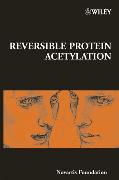Reversible Protein Acetylation
BücherAngebote / Angebote:
The reversible acetylation of lysine residues on histone proteins has emerged as a major factor in the regulation of transcription in eukaryotes. All core histone proteins are acetylated and unique functional chromosomal domains are characterized by specific patterns of acetylation within their histone proteins. Functional correlations have been established between the level of acetylation of individual genes and their transcriptional activity. These complex signals are currently being elucidated in the context of the 'histone code hypothesis'. This model posits that distinct acetylation patterns in histones, along with other post-translational modifications, serve as specific signals recognized by the nuclear transcriptional machinery.
Histone acetylation is under the control of competing histone acetyltransferases (HATs) and histone deacetylases (HDACs). Both enzyme families contain many members: at least 18 distinct human HDACs have been identified. As well as regulating transcription, these proteins play critical roles in cell cycle control and differentiation. Acetylation is not restricted to histone proteins, a growing number of important biological functions appear to be regulated via acetylation. These include DNA binding (p53), nuclear-cytoplasmic shuttling (NF-kB) and coactivator recruitment (HIV Tat protein).
This novel research opens up new and exciting possibilities for drug design. Inhibitors have been developed that specifically target either HDACs or HATs. HDAC inhibitors exhibit selective toxicity towards tumour cells and are being developed as potential anticancer drugs. This book describes current knowledge of acetylation and features extensive discussions amongst the world's experts in this field, with an emphasis on major unanswered questions.
Lieferbar in ca. 10-20 Arbeitstagen




